Regardless of the size or scope of your project, our goal is to always:
- Streamline the process
- Minimize mistakes, miscommunications and revisions
- Keep you informed and approving each step in the process
- To make sure you get the animation you want as quickly and accurate to your vision as possible.
The overall goal is for our work to enhance, complement and add to your work. Not to distract or overwhelm it.
-
Step 1 – Project Parameters and Estimate/Bid
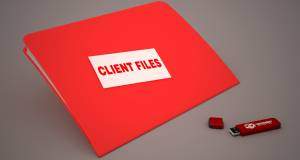 You, the client, provide us with your concept and its parameters. The content, the length, the style of animation. Just any and all information you can give us at the beginning of the project. This will aid us in a quick and solid estimate/bid on the project price.
You, the client, provide us with your concept and its parameters. The content, the length, the style of animation. Just any and all information you can give us at the beginning of the project. This will aid us in a quick and solid estimate/bid on the project price.If you have existing budgets, we will gladly work with you to try to come up with a professional quality solution that stays within budgets.
-
Step 2 – Design (if needed)
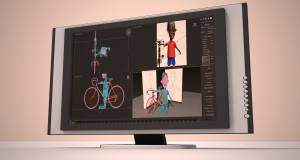 In this step we design the elements for the animation. A model of a character, the 3D geometry of a prototype part and its textures. Any of the individual elements that will be in the animation to get your approval and your client’s approval so we work out design issues before we begin animation.
In this step we design the elements for the animation. A model of a character, the 3D geometry of a prototype part and its textures. Any of the individual elements that will be in the animation to get your approval and your client’s approval so we work out design issues before we begin animation.We try to create all of our work files structured in as modular a way as possible to accommodate inevitable changes. But we want to ask the right questions in the beginning to streamline the process and avoid time-consuming mistakes.
Often when working with a client, we will be handed finished art and we just need to put it in motion. Obviously, if you have the work designed and can provide us with files, we’ll have nothing to design.
-
Step 3 – Storyboards (if needed)
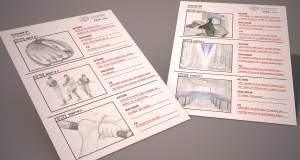 For larger or more complex projects, either you the client or we, Cartoonery Studios, will create a storyboard to map out the animation step-by-step, shot-by-shot.
For larger or more complex projects, either you the client or we, Cartoonery Studios, will create a storyboard to map out the animation step-by-step, shot-by-shot.These will generally be simple pencil drawings or very simple 3D mock-ups to illustrate the flow of the video, break down the timing of the shots, establish camera angles and generally serve as the initial guide for creating the animation.
These can be very detailed, or just simple descriptions of the animation. Some projects will be so simple and straightforward as to not need them at all.
The purpose of these storyboards is for both client and animators to feel they understand what is to be created. The longer or more complex a project, the more likely that they will be both needed and useful for both of us.
-
Step 4 – Animatic/Previs (if needed)
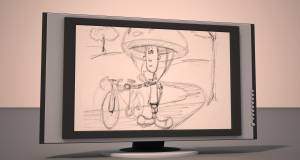 Animatics are most often needed for longer and/or complex animations. Multi-minute and/or multi-scene animation projects.
Animatics are most often needed for longer and/or complex animations. Multi-minute and/or multi-scene animation projects.They are simply storyboards “come to life.” Animating the storyboards so that in addition to framing, shot angle or lighting, every beat of the timing can be worked out at this early stage.
Animatics (a 2D simple ‘cartoon’ of a storyboard) or Previs (a simplified 3D animation to work out timing and actions) are rarely needed. They are meant for projects that would take days or weeks to render the final project and to work out timing and other details at an early stage.
With most smaller projects so much preliminary work would not be needed.
-
Step 5 – Building Animation & Approval
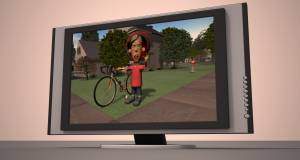 In this step we provide you with still images of the animation so you can give us final sign off on all of the elements within of the shots overall before we start animation. Again this is a process designed to head off any easily fixable problems before the animation work begins.
In this step we provide you with still images of the animation so you can give us final sign off on all of the elements within of the shots overall before we start animation. Again this is a process designed to head off any easily fixable problems before the animation work begins.
Some projects won’t require all of these steps. A really large project may require even more intermediate planning. But regardless of the size or scope of your project, our goal is to always make the process as quick and seamless as possible.
We will of course give you the benefit of all of our skills and ideas. We LOVE to be “let loose” to make “cool animation”. But it is important for you as a client to know that the outside animation company that you have hired is overtly, and from the outset, thinking of your final product rather than the animated piece in isolation. We understand we are making this animation for you, and not for us.